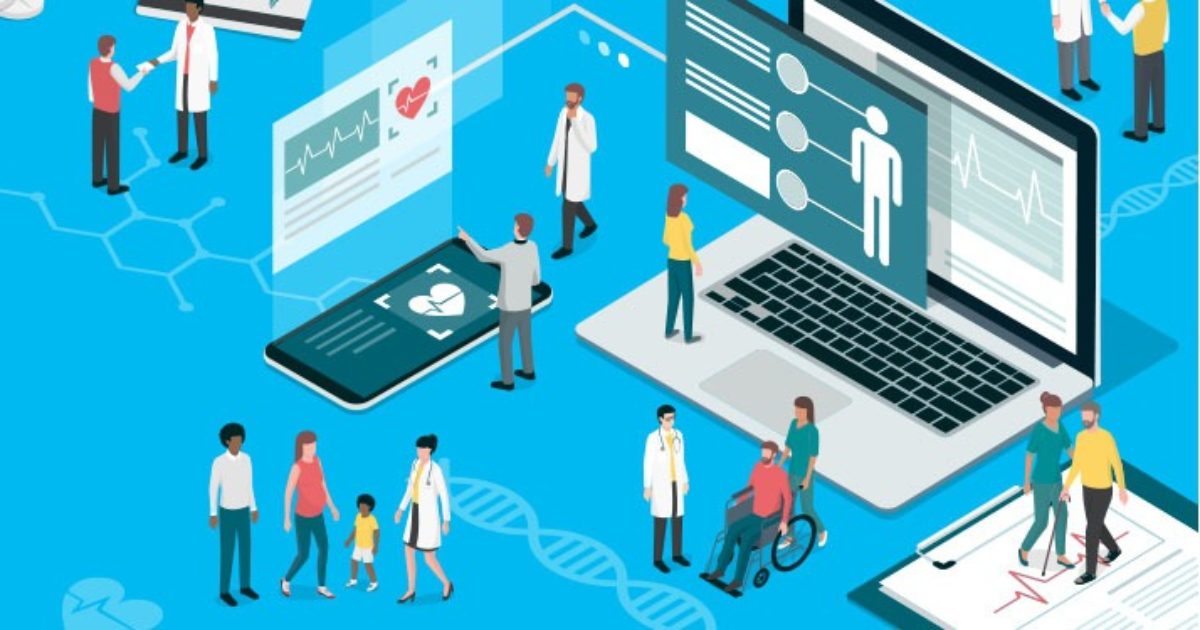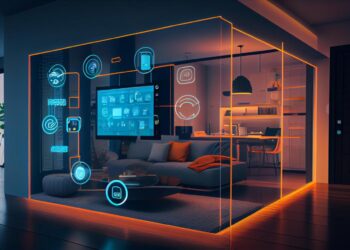The healthcare industry is undergoing a monumental transformation, propelled by the integration of smart technologies. This isn’t just about electronic health records anymore; it’s a profound shift towards a more connected, proactive, and personalized approach to well-being, often termed the Smart Healthcare Revolution. By leveraging the power of Artificial Intelligence (AI), the Internet of Things (IoT), big data analytics, and advanced connectivity, intelligent healthcare solutions are redefining patient care, enhancing operational efficiency, and empowering individuals to take greater control of their health. This comprehensive article delves into the intricate world of smart healthcare, dissecting its core technological components, the profound benefits it delivers, the significant challenges it faces, and the exciting future it promises for global health and wellness.
The Pillars of Smart Healthcare
Smart healthcare refers to the application of intelligent technologies to improve health services, manage health systems, and foster individual well-being. It moves beyond traditional, reactive care to a proactive, predictive, and preventative model, powered by data and connectivity.
A. Internet of Medical Things (IoMT): This is the network of connected medical devices, sensors, and equipment that collect and transmit health data. It’s the “eyes and ears” of smart healthcare.
- Wearable Devices: Smartwatches, fitness trackers, and specialized health patches that monitor vital signs (heart rate, blood pressure, SpO2, temperature), sleep patterns, activity levels, and even ECG readings.
- Connected Home Health Devices: Smart scales, blood glucose meters, continuous glucose monitors (CGMs), smart pill dispensers, and remote patient monitoring kits that transmit data directly to healthcare providers.
- Smart Hospital Equipment: Connected infusion pumps, MRI machines, patient beds, and surgical tools that can share data and be remotely monitored.
- Implantable Devices: Pacemakers, defibrillators, and neurostimulators that can transmit data wirelessly to track patient progress and alert to anomalies.
B. Artificial Intelligence (AI) and Machine Learning (ML): AI is the “brain” of smart healthcare, processing vast datasets to derive actionable insights and enable intelligent decision-making.
- Predictive Analytics: AI models analyze patient data (medical history, lifestyle, genetics, real-time vital signs) to predict disease risk, identify patients likely to deteriorate, or forecast outbreaks.
- Diagnostic Assistance: AI algorithms can analyze medical images (X-rays, MRIs, CT scans) with high accuracy, assisting radiologists and pathologists in detecting anomalies or diagnosing conditions earlier than human eyes might.
- Personalized Treatment Plans: AI can sift through vast amounts of research and patient data to recommend tailored treatment protocols, drug dosages, and therapies based on an individual’s unique biological profile.
- Drug Discovery and Development: AI accelerates the drug discovery process by identifying potential drug candidates, predicting their efficacy and toxicity, and optimizing clinical trial designs.
- Natural Language Processing (NLP): Enables AI to understand and extract meaningful information from unstructured clinical notes, patient records, and research papers, making this data searchable and analyzable.
C. Big Data Analytics: Healthcare generates enormous volumes of data. Big data technologies are crucial for storing, processing, and analyzing these complex datasets to uncover trends and patterns.
- Electronic Health Records (EHRs): Digitized patient charts that consolidate medical history, lab results, medications, and physician notes, making information readily accessible and analyzable.
- Population Health Management: Analyzing aggregated patient data to identify health trends within communities, target interventions, and manage chronic disease populations.
- Real-time Dashboards: Provide healthcare providers with immediate, comprehensive views of patient status, hospital capacity, and resource allocation.
D. Telemedicine and Remote Patient Monitoring (RPM): Leveraging connectivity to deliver care remotely.
- Virtual Consultations: Video calls and secure messaging platforms allow patients to consult with doctors from home, improving access to care, especially in rural areas.
- Continuous Monitoring: IoMT devices continuously collect patient data from their homes, transmitting it to clinicians who can monitor trends, intervene proactively, and manage chronic conditions remotely.
- Digital Therapeutics: Software programs designed to prevent, manage, or treat a medical disorder or disease, often delivered via smartphone apps, providing evidence-based therapeutic interventions.
E. Robotics and Automation: Physical machines enhance efficiency, precision, and safety in various healthcare settings.
- Surgical Robots: Assist surgeons with minimally invasive procedures, offering enhanced precision, dexterity, and 3D visualization.
- Pharmacy Automation: Robots automate the dispensing, packaging, and delivery of medications, reducing errors and improving efficiency.
- Hospital Logistics Robots: Autonomous mobile robots (AMRs) transport medical supplies, lab samples, and linens within hospitals, freeing up human staff.
- Rehabilitation Robots: Aid patients in physical therapy, providing repetitive exercises, gait training, and objective progress tracking.
F. Blockchain Technology: Emerging as a solution for secure, transparent, and immutable health data management.
- Secure EHRs: Provides a decentralized and tamper-proof way to store and share patient records across different healthcare providers, enhancing interoperability while maintaining privacy.
- Supply Chain Management: Tracks pharmaceutical products from manufacturer to patient, ensuring authenticity and preventing counterfeiting.
- Clinical Trial Management: Creates a transparent and auditable record of clinical trial data, enhancing trust and efficiency.
Core Applications of Smart Healthcare Innovations
The integration of these intelligent technologies is manifesting across every facet of the healthcare continuum, transforming how care is delivered and experienced.
Proactive and Predictive Health Management
Moving from “sick care” to “well care.”
- Early Disease Detection: AI analyzes data from wearables and patient records to identify early indicators of conditions like diabetes, heart disease, or even neurological disorders years before symptoms become apparent.
- Personalized Wellness Programs: Based on genetic data, lifestyle, and real-time biometric readings, smart platforms offer tailored exercise, nutrition, and stress management plans.
- Behavioral Nudging: Smart apps provide gentle reminders and motivation to adhere to healthy habits, medication schedules, or exercise routines.
- Population Health Risk Stratification: Identifying high-risk patient groups within a population to deliver targeted preventative care.
Enhanced Diagnosis and Treatment
Making medical interventions more precise, efficient, and effective.
- AI-Assisted Radiology and Pathology: AI algorithms highlight suspicious areas in scans and microscope slides, reducing diagnostic errors and speeding up interpretation.
- Precision Medicine: Tailoring medical treatment to the individual characteristics of each patient, considering their genetics, lifestyle, and environment, leading to more effective therapies and fewer adverse drug reactions.
- Surgical Robotics and Automation: Minimally invasive surgeries with robotic assistance lead to smaller incisions, less pain, faster recovery times, and reduced risk of complications.
- Virtual Reality (VR) for Surgery Planning and Training: Surgeons can practice complex procedures in a virtual environment before operating on a patient.
Remote Patient Monitoring (RPM) and Telehealth
Extending care beyond the hospital walls.
- Chronic Disease Management: Patients with conditions like hypertension, diabetes, or heart failure can have their vital signs continuously monitored from home, allowing clinicians to adjust treatment plans in real-time and prevent crises.
- Post-Operative Care: Remote monitoring can track recovery, detect complications early, and reduce the need for hospital readmissions.
- Access to Specialists: Patients in rural or underserved areas can access specialist consultations via telehealth, overcoming geographical barriers.
- Mental Health Support: Telehealth platforms offer convenient and discreet access to therapy and counseling services.
Hospital Operations and Efficiency
Streamlining workflows and optimizing resource allocation within medical facilities.
- Predictive Hospital Staffing: AI can forecast patient admissions and discharges, optimizing staff allocation to match demand and reduce burnout.
- Automated Logistics: Robots handle tasks like delivering medications, meals, and medical waste, improving efficiency and reducing infection risk.
- Smart Inventory Management: Tracking medical supplies in real-time to prevent stockouts and reduce waste.
- Emergency Room Optimization: AI can predict patient wait times, triage patients more effectively, and optimize flow within busy emergency departments.
Drug Discovery and Research
Accelerating the development of new treatments.
- AI for Target Identification: AI sifts through vast biological datasets to identify potential drug targets for diseases.
- Virtual Screening: AI can simulate how millions of compounds might interact with a target, vastly accelerating the search for new drugs.
- Clinical Trial Optimization: AI helps identify suitable patients for trials, monitor patient responses, and analyze trial data more efficiently, speeding up drug approval processes.
- Personalized Drug Development: AI could one day facilitate the rapid development of drugs tailored to an individual’s genetic makeup.
The Transformative Benefits of Smart Healthcare
The adoption of smart healthcare technologies is poised to revolutionize global health outcomes, offering a myriad of advantages for patients, providers, and public health systems.
A. Improved Patient Outcomes and Quality of Life:
- Earlier Diagnosis and Intervention: Predictive analytics and AI-assisted diagnostics can detect diseases at their nascent stages, allowing for earlier and more effective treatment.
- Personalized Care: Treatments tailored to individual patient profiles lead to higher efficacy and fewer adverse effects.
- Enhanced Disease Management: Continuous monitoring and remote support empower patients with chronic conditions to better manage their health and prevent complications.
- Reduced Hospital Stays: Remote monitoring and virtual care can often prevent the need for hospital admissions or facilitate earlier discharge.
B. Increased Accessibility and Equity of Care:
- Bridging Geographical Gaps: Telemedicine and remote monitoring provide access to quality healthcare for individuals in rural or underserved areas.
- Reduced Waiting Times: Virtual consultations and optimized hospital operations can significantly shorten wait times for appointments and treatments.
- Care for Vulnerable Populations: Smart home health devices and AI assistants can support independent living for the elderly and those with disabilities.
C. Significant Cost Reductions and Efficiency Gains:
- Preventative Care Focus: Shifting from reactive treatment to proactive prevention can significantly reduce the overall burden of disease and associated healthcare costs.
- Optimized Resource Allocation: AI-driven insights help hospitals manage staff, beds, and equipment more efficiently, reducing waste and improving throughput.
- Lower Administrative Costs: Automation of tasks like scheduling, billing, and record-keeping reduces operational overhead.
- Accelerated Drug Development: AI can cut the time and cost associated with bringing new drugs to market.
D. Empowered Patients and Enhanced Engagement:
- Greater Control Over Health: Wearables and health apps provide individuals with real-time data and insights, empowering them to make informed choices about their lifestyle and well-being.
- Convenience: Accessing care from home, receiving proactive alerts, and having personalized wellness plans make managing health more convenient.
- Improved Health Literacy: Digital tools can educate patients about their conditions and treatment options in an accessible way.
E. Advanced Research and Public Health Insights:
- Faster Discoveries: AI and big data accelerate medical research, leading to new treatments and cures more quickly.
- Epidemiological Insights: Analyzing vast datasets can help track disease outbreaks, understand transmission patterns, and inform public health interventions more effectively.
- Personalized Medicine Advancement: The continuous flow of data contributes to a deeper understanding of human biology and disease, paving the way for truly individualized healthcare.
Navigating the Challenges of Smart Healthcare Adoption

Despite its immense promise, the widespread and equitable implementation of smart healthcare solutions faces several formidable challenges that require concerted effort and strategic planning.
A. Data Privacy and Security Concerns:
- Highly Sensitive Data: Healthcare data is among the most sensitive personal information. Ensuring its robust protection against breaches, unauthorized access, and misuse is paramount.
- Interoperability vs. Privacy: While sharing data across platforms is crucial for comprehensive care, it also increases privacy risks. Robust anonymization and consent frameworks are vital.
- Cybersecurity Threats: Healthcare systems are increasingly vulnerable targets for ransomware and other cyberattacks that can cripple operations and compromise patient data.
B. Interoperability and Standardization:
- Fragmented Systems: Healthcare is plagued by disparate IT systems that often cannot communicate with each other, hindering seamless data flow between hospitals, clinics, and smart devices.
- Lack of Universal Standards: The absence of common data formats and communication protocols creates silos of information, making it difficult to create a holistic view of a patient’s health.
- Vendor Lock-in: Proprietary systems can make it challenging for healthcare providers to switch vendors or integrate new technologies.
C. Regulatory and Legal Complexities:
- Evolving Regulations: Laws regarding data privacy (e.g., HIPAA, GDPR), medical device approval (e.g., FDA, CE), and the practice of telemedicine are constantly evolving and vary by jurisdiction, creating a complex compliance landscape.
- Liability Issues: Determining legal liability in cases where AI-driven diagnostics or autonomous robots make errors is a complex challenge that needs clear legal frameworks.
- Ethical Guidelines: Establishing ethical guidelines for the use of AI in clinical decision-making, data collection, and patient autonomy is crucial.
D. Cost and Funding:
- High Initial Investment: Deploying comprehensive smart healthcare infrastructure, including IoMT devices, AI platforms, and secure data systems, requires substantial upfront capital.
- Return on Investment (ROI): Demonstrating a clear ROI for some smart healthcare technologies can be challenging, particularly for preventative measures whose benefits accrue over the long term.
- Reimbursement Models: Healthcare payment models often lag behind technological advancements, making it difficult for providers to get reimbursed for new smart healthcare services.
E. Digital Divide and Equity in Access:
- Unequal Access to Technology: Not all patients have access to smartphones, reliable internet, or the digital literacy needed to engage with smart healthcare tools, exacerbating existing health disparities.
- Socioeconomic Barriers: The cost of personal smart health devices or broadband access can be prohibitive for lower-income populations.
- Language and Cultural Barriers: Ensuring smart healthcare solutions are culturally sensitive and available in multiple languages is crucial for equitable access.
F. Workforce Training and Adoption:
- Skills Gap: Healthcare professionals need extensive training to effectively use and interpret data from smart healthcare tools, understand AI insights, and manage virtual consultations.
- Resistance to Change: Some clinicians may be resistant to adopting new technologies, preferring established methods or fearing job displacement.
- Burnout: Introducing new technologies without adequate training or support can add to the burden on already overworked healthcare staff.
G. Accuracy and Reliability of AI/IoMT Data:
- Sensor Limitations: The accuracy of data from consumer-grade wearables can vary, and over-reliance on unvalidated data could lead to misdiagnosis or inappropriate self-treatment.
- Algorithmic Bias: If AI models are trained on biased datasets, they can lead to inequitable or inaccurate diagnoses and treatment recommendations for certain demographic groups.
- Over-reliance on AI: The risk of healthcare professionals over-relying on AI recommendations without critical human oversight.
The Future Trajectory of Smart Healthcare
The evolution of smart healthcare is relentless, promising an increasingly personalized, predictive, and pervasive system that puts the individual at the center of their well-being.
A. Hyper-Personalized Preventive Care: AI will leverage an individual’s complete “digital twin” (combining genetic data, lifestyle, environmental factors, and continuous biometric monitoring) to provide hyper-personalized risk assessments and highly targeted preventative interventions tailored to prevent disease before it even manifests.
B. Ubiquitous Remote Patient Monitoring: RPM will become the norm for chronic disease management and post-operative care, with highly accurate, non-invasive sensors seamlessly integrated into daily life, providing real-time insights to care teams.
C. AI as a Clinical Co-Pilot: AI will evolve beyond diagnostic assistance to become an intelligent co-pilot for clinicians, offering real-time decision support during consultations, suggesting optimal treatment pathways, and even assisting with complex surgical maneuvers.
D. Virtual Hospitals and Tele-ICUs: The concept of virtual hospitals will expand, with remote care teams managing patient conditions in their homes, supported by advanced IoMT, robotics, and AI, reducing the need for physical hospital beds. Tele-ICUs will become standard for remote critical care oversight.
E. Precision Public Health: AI and big data will enable public health agencies to track and predict disease outbreaks with unprecedented accuracy, model the impact of interventions, and respond to health crises more effectively.
F. Genomic-Driven Therapies: Advances in AI and genomics will accelerate the development and delivery of personalized gene therapies and other cutting-edge treatments tailored to an individual’s unique genetic makeup.
G. Integrated Wellness Ecosystems: Healthcare will seamlessly integrate with wellness apps, smart home devices, and community services to create holistic ecosystems that support physical, mental, and social well-being throughout an individual’s lifespan.
Conclusion
The Smart Healthcare Revolution is not merely a technological upgrade; it’s a profound paradigm shift towards a future where health is proactively managed, care is universally accessible, and every individual is empowered to live a longer, healthier, and more fulfilling life. The challenges are significant, but the imperative to create a more resilient and equitable global health system makes this intelligent transformation an absolute necessity.













